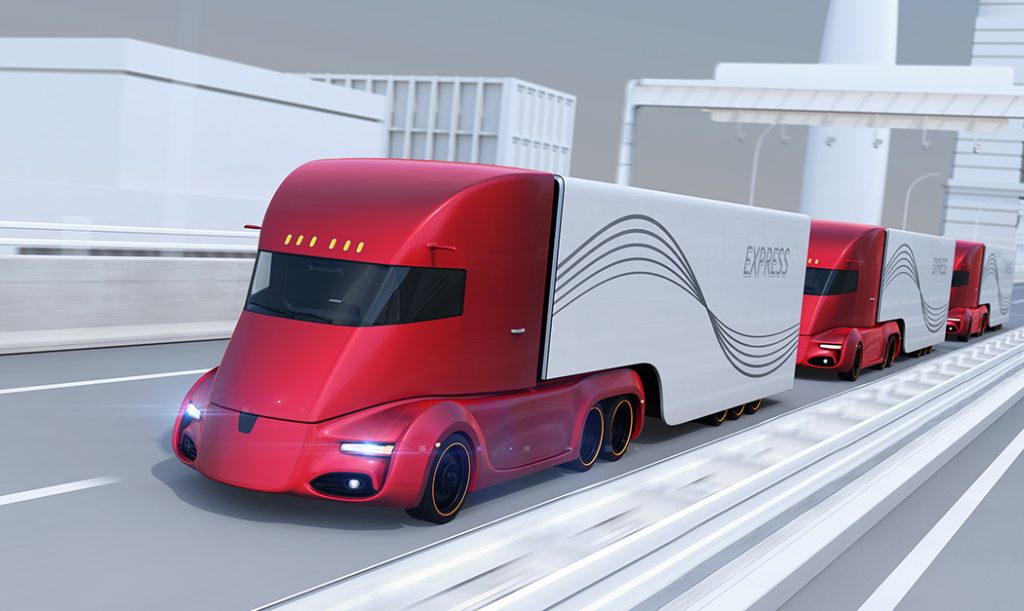
The semi-truck industry is undergoing a transformative period fueled by cutting-edge technological advancements. From automation to sustainable energy solutions, many of these innovations are not only revolutionizing how goods are transported, but also redefining what it means to drive a truck. However, as with any significant change, these advancements bring both opportunities and challenges. This month let’s explore the latest technologies shaping the semi-truck industry and the pros and cons of their implementation.
Automation and autonomous driving. One of the most talked about advancements in the trucking industry is automation. Both semi-autonomous and fully autonomous trucks are being developed by companies such as Tesla, Daimler, and Waymo. These vehicles use artificial intelligence (AI), cameras, and sensors to navigate roads with minimal or no human intervention.
Some of the pros include improved safety, increased efficiency, and a solution to the driver shortage. Autonomous systems are designed to reduce human error, which is a leading cause of accidents. Features such as automatic emergency braking and lane-keeping assistance enhance safety. Automated trucks can operate continuously without needing rest breaks, potentially speeding up delivery times and reducing costs. With the trucking industry facing a persistent driver shortage, autonomous vehicles could help fill the gap.
However, some of the cons include job displacement of drivers, technological challenges, and high costs. The rise of self-driving trucks raises concerns about the future of truck driving jobs, which millions depend on for their livelihoods. Autonomous systems still struggle with complex driving scenarios, such as navigating through bad weather or dealing with unpredictable human drivers. Developing and implementing autonomous technology also requires substantial investment, which may take years to recoup.
Electric and hydrogen-powered trucks. Today, sustainability is a top priority, and the trucking industry is no exception. Electric and hydrogen-powered semi-trucks are emerging as greener alternatives to traditional diesel trucks. Tesla’s electric semi and Nikola’s hydrogen fuel cell trucks are leading the charge in this domain.
Some of the pros for electric and hydrogen-powered trucks include environmental benefits, lower operating costs, and regulatory compliance. These trucks produce zero tailpipe emissions, which will significantly reduce the industry’s carbon footprint. Electric trucks, in particular, have fewer moving parts than diesel engines, reducing maintenance costs over time. As governments throughout the world tighten emissions regulations, adopting cleaner technologies ensures compliance and avoids penalties.
However, some of the cons include infrastructure limitations, range and payload constraints, and high costs. The lack of widespread charging or refueling infrastructure for electric and hydrogen trucks poses a significant hurdle. Current battery technology limits the range and payload capacity of electric trucks, making them less viable for long-haul routes. While operating costs are lower, the upfront costs for electric and hydrogen-powered trucks still remains steep.
Connectivity and telematics. The integration of telematics and connectivity solutions is enhancing operational efficiency across the entire trucking and transportation industries. These systems collect and analyze tons of data in real time, providing insights into vehicle performance, route optimization, and driver behavior.
Some of the pros include enhanced efficiency, more predictive maintenance, and improved compliance. Real-time data enables better route planning and reduces fuel consumption. These systems can also identify maintenance issues before they become critical, minimizing downtime. Automated tracking of driving hours and vehicle inspections helps meet regulatory requirements more efficiently.
However, some of the cons include major privacy concerns, implementation costs, and data vulnerability. Continuous monitoring of data raises questions about the privacy of drivers. Installing and maintaining telematics systems can be expensive for smaller trucking companies. Increased connectivity can expose trucks to cybersecurity risks, such as hacking or data breaches, as well.
The road ahead. The trucking industry’s technological evolutions are a double-edged sword. While these advancements promise to improve efficiency, safety, and sustainability, they also present many challenges that must be addressed. Collaboration among all of the manufacturers, regulators, and stakeholders will be crucial when attempting to navigate this impending transition.
Ultimately, the goal is to strike a balance between leveraging technology for progress and addressing its socioeconomic impacts. With thoughtful implementation and innovation, the trucking industry is poised to drive into a cleaner, safer, and more efficient future. If you have comments or questions, feel free to stop by our shop in Saxonburg, PA, or call us at (724) 360-4080, or visit our website at www.pittsburghpower.com. We are always here to help!
